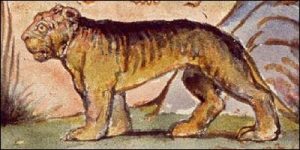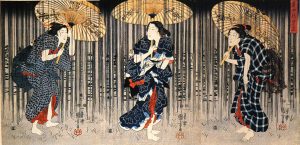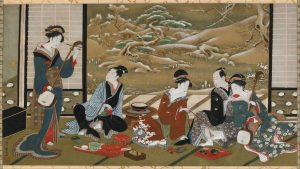“The Tyger”
I vividly recall going to the zoo as a child and being amazed at the tiger exhibit, excitement that seems to be shared by all the other young visitors present. Perhaps it is their ferocious roar or their fur’s unique appearance, but there was always an enormous crowd gathered around this exotic creatures exhibit. William Blake captures much of the danger and fear associated with this animal in his poem entitled “The Tyger”, along with which he depicts a detailed image of how he imagines it within its elements. While the famed author paints the picture of a deadly beast in his written work, as seen with the words, “Dare its deadly terrors clasp,” and “Tyger Tyger burning bright, In the forests of the night,” the visual representation is much less intimidating. Having read the poem first, I was expecting his tiger image to be more menacing and frightening than the one before my eyes. I found the tiger I saw depicted to be endearing and peaceful, unsure of what is going on around it in the forest. We only see one of his eyes, but it seems to indicate that he is skeptical and wary of his surroundings. It is not killing another animal, getting ready to attack prey, or preparing to let out a loud roar. Instead, the tiger is wallowing around and keeping to itself in the natural environment without a care in the world. I was surprised to see the tranquility of Blake’s painting considering the otherwise fear-inducing persona he ascribes to tigers throughout the length of his poem.






